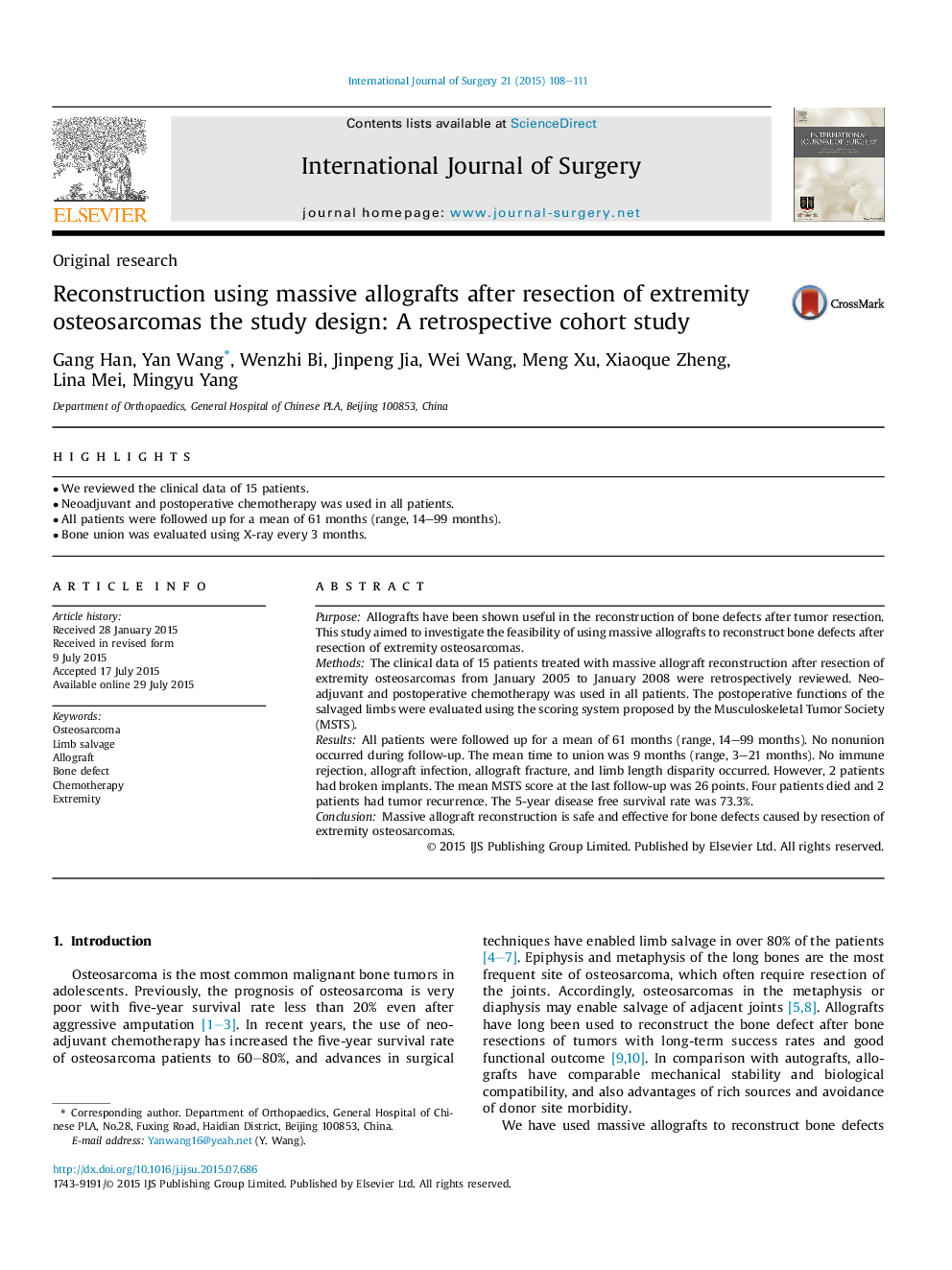| Article ID | Journal | Published Year | Pages | File Type |
|---|---|---|---|---|
| 6250941 | International Journal of Surgery | 2015 | 4 Pages |
â¢We reviewed the clinical data of 15 patients.â¢Neoadjuvant and postoperative chemotherapy was used in all patients.â¢All patients were followed up for a mean of 61 months (range, 14-99 months).â¢Bone union was evaluated using X-ray every 3 months.
PurposeAllografts have been shown useful in the reconstruction of bone defects after tumor resection. This study aimed to investigate the feasibility of using massive allografts to reconstruct bone defects after resection of extremity osteosarcomas.MethodsThe clinical data of 15 patients treated with massive allograft reconstruction after resection of extremity osteosarcomas from January 2005 to January 2008 were retrospectively reviewed. Neoadjuvant and postoperative chemotherapy was used in all patients. The postoperative functions of the salvaged limbs were evaluated using the scoring system proposed by the Musculoskeletal Tumor Society (MSTS).ResultsAll patients were followed up for a mean of 61 months (range, 14-99 months). No nonunion occurred during follow-up. The mean time to union was 9 months (range, 3-21 months). No immune rejection, allograft infection, allograft fracture, and limb length disparity occurred. However, 2 patients had broken implants. The mean MSTS score at the last follow-up was 26 points. Four patients died and 2 patients had tumor recurrence. The 5-year disease free survival rate was 73.3%.ConclusionMassive allograft reconstruction is safe and effective for bone defects caused by resection of extremity osteosarcomas.
